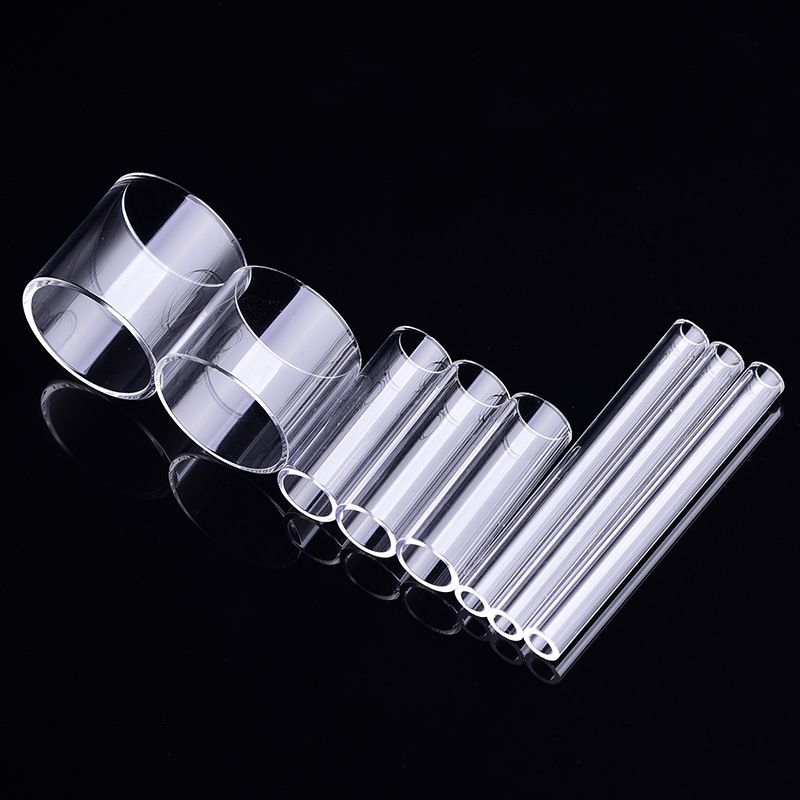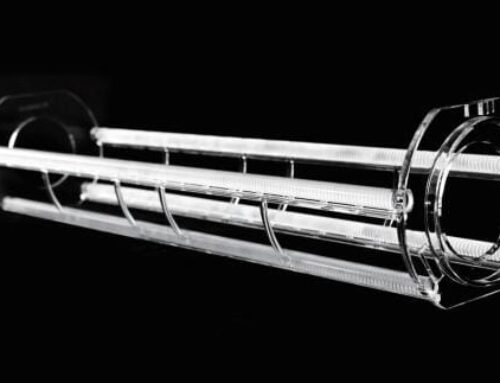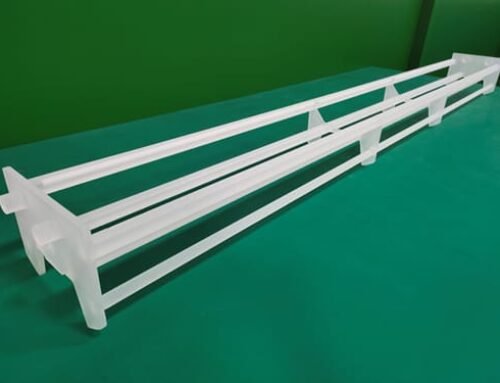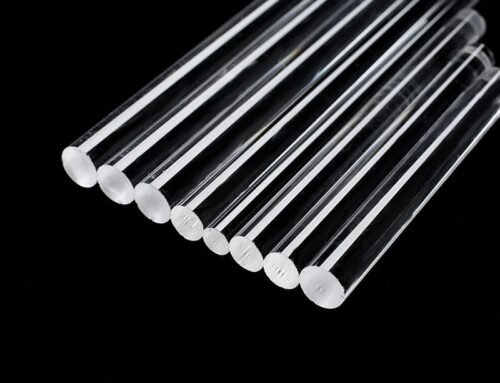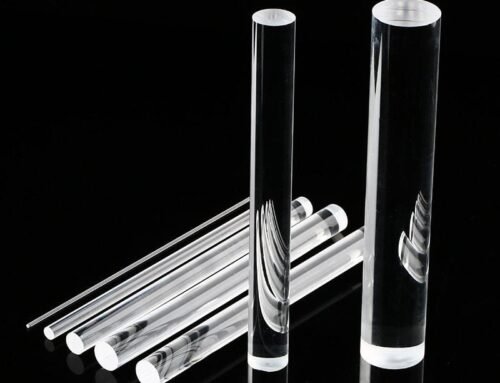Introduction to High-Temperature Quartz Glass
High-temperature resistant quartz glass is a specialized material that exhibits outstanding thermal stability and mechanical resilience. Made primarily from silica, this type of glass is distinguished by its high melting point, typically exceeding 1,200 degrees Celsius (2,192 degrees Fahrenheit). This unique thermal resistance makes high-temperature quartz glass an invaluable asset in various industrial applications, particularly in environments that require materials to endure extreme thermal and mechanical stresses.
Unlike standard glass, high-temperature quartz glass possesses a low coefficient of thermal expansion, which minimizes the risk of thermal shock. This characteristic allows it to maintain its structural integrity when subjected to rapid temperature changes, a common scenario in industrial furnaces. Additionally, the purity of the silica used in manufacturing high-temperature quartz glass contributes significantly to its high performance. The absence of contaminants enhances optical clarity and mechanical durability, making it preferable for applications that demand both transparency and strength.
The applications of high-temperature quartz glass are extensive. Its robustness makes it ideal for use in laboratory equipment, semiconductor manufacturing, and various components in industrial furnaces. For instance, high-temperature quartz glass tubes and containers are frequently employed to transport or contain molten metals and other materials subjected to extreme conditions. Furthermore, its use extends to protective screens and windows that allow visibility in high-temperature processes while safeguarding personnel and equipment from intense heat. The unique qualities of high-temperature quartz glass position it as a cornerstone material in any industry where high thermal resistance and reliability are crucial, ultimately enhancing operational efficiency and safety in furnaces and related machinery.
Properties of High-Temperature Resistant Quartz Glass
High-temperature resistant quartz glass is a specialized material that exhibits a range of physical and chemical properties, making it uniquely suited for demanding industrial applications, particularly in high-temperature environments such as furnaces. One of its most notable properties is exceptional thermal stability. Quartz glass maintains its integrity and performance in elevated temperatures, often exceeding 1000 degrees Celsius. This thermal resilience ensures that it can endure prolonged exposure to heat without undergoing deformation or loss of structural integrity.
Another significant characteristic of high-temperature resistant quartz glass is its low thermal expansion coefficient. This property is crucial when the material is subjected to rapid temperature changes. A low thermal expansion coefficient minimizes the risks of cracking or shattering due to thermal stress, allowing the glass to withstand the frequent thermal cycling that occurs in industrial processes. This makes it an ideal choice for furnaces that regularly experience extreme temperature fluctuations.
Moreover, high-temperature resistant quartz glass exhibits excellent resistance to thermal shock, further enhancing its suitability for high-temperature applications. The ability to absorb sudden heat changes without cracking or breaking down is essential in environments where materials are subjected to dynamic thermal conditions.
In addition to its thermal properties, this material also demonstrates remarkable transparency to infrared light. This characteristic allows for effective heat transmission, enabling processes that rely on infrared radiation for heating or monitoring purposes. Lastly, high-temperature resistant quartz glass is chemically inert, resisting corrosion from various substances, which ensures durability and longevity in industrial applications where chemical exposure may occur.
Manufacturing Process of Quartz Glass
The manufacturing of high-temperature resistant quartz glass begins with the selection of high purity silica sand, which serves as the primary raw material. This silica sand is characterized by its low impurity levels, which is crucial for achieving the desired optical and thermal properties of the final product. The purification process often includes physical and chemical methods to remove unwanted minerals and contaminants, ensuring that the silica used meets the stringent requirements for industrial applications.
Once purified, the silica sand undergoes a melting process. This typically occurs in a furnace designed to withstand extremely high temperatures, often exceeding 1700 degrees Celsius. During melting, the silica transforms into a molten state, allowing for the removal of air and gas bubbles that would otherwise compromise the glass’s integrity. The careful control of temperature and time during this phase is essential, as it significantly influences the viscosity and final properties of the quartz glass.
Following the melting phase, the molten silica is shaped into the desired form. This can be accomplished using various techniques such as blowing, pressing, or casting, depending on the specific application requirements. In many cases, complex geometries are achieved through precise molds or controlled blowing techniques, which allow for the creation of intricate designs and structures. The shaping process must be executed with exactitude to ensure uniformity and minimize defects in the finished product.
After shaping, the quartz glass undergoes an annealing process. This involves gradually cooling the glass in a controlled environment, which alleviates internal stresses that may have been introduced during fabrication. Proper annealing is critical, as it enhances both the durability and thermal resistance of the quartz glass, making it suitable for challenging environments found within industrial furnaces. The combination of high purity materials, meticulous melting, precise shaping, and careful annealing results in high-temperature resistant quartz glass that meets the demanding standards of various industrial applications.
Applications in Industrial Furnaces
High-temperature resistant quartz glass is a critical material in the operation of industrial furnaces, where extreme thermal conditions prevail. One of its primary applications is in furnace linings. The use of quartz glass for linings helps to protect the structural integrity of the furnace by resisting thermal shock and providing excellent insulation. This attribute significantly reduces heat loss and enhances overall energy efficiency, which is essential in maintaining optimal operating temperatures and minimizing fuel consumption.
Another significant application of quartz glass in industrial furnaces is in the manufacture of viewports. These viewports enable operators to monitor the interior conditions without compromising the integrity of the furnace. The transparency and high-temperature resistance of quartz glass allow clear visibility while enduring the harsh environmental conditions, thus facilitating effective supervision of processes such as melting, casting, and sintering. This monitoring capability is vital for ensuring product quality and operational safety.
Additionally, quartz glass is utilized in specialized tubes designed for transporting gases or liquids at elevated temperatures within the furnace system. The inert nature of quartz minimizes contamination risk, making it suitable for processes that require high levels of purity. Moreover, its ability to withstand substantial thermal gradients ensures that these tubes maintain their structural integrity, thus contributing to safer operational environments.
Lastly, thermal insulation in industrial furnaces benefits substantially from high-temperature resistant quartz glass. Its low thermal conductivity allows for effective temperature control within the furnace, which is crucial for energy conservation and process stability. By minimizing heat loss, quartz glass reduces the operational costs associated with heating, thereby enhancing the furnace’s overall efficiency. In these various applications, high-temperature resistant quartz glass plays an essential role in optimizing both safety and performance in industrial furnace applications.
Advantages Over Other Materials
High-temperature resistant quartz glass offers several significant advantages over alternative materials such as ceramic and conventional glass, making it an ideal choice for industrial furnace applications. One of the most notable benefits is its superior durability. Quartz glass is less prone to cracking and breaking under extreme thermal stresses compared to ceramics and standard glass, which can be particularly vulnerable to thermal shock. This durability not only enhances the longevity of the material but also reduces the need for frequent replacements, thereby minimizing downtime in industrial operations.
Thermal resistance is another critical advantage of high-temperature resistant quartz glass. It can withstand temperatures exceeding 1,000 degrees Celsius without deforming or losing structural integrity. In contrast, many ceramics may begin to soften or degrade at elevated temperatures, which can compromise their effectiveness in furnace environments. The excellent thermal stability of quartz glass contributes to consistent performance, ensuring that industrial processes can occur without interruptions caused by material failure.
From a cost-effectiveness standpoint, while the initial investment in high-temperature resistant quartz glass may be higher than that of ceramics or conventional glass, its enhanced lifespan and reduced maintenance requirements often lead to lower overall operational costs. Industrial facilities that prioritize efficiency can benefit from the long-term savings associated with using quartz glass, as the material’s performance can significantly improve the operational efficiency of furnaces.
Moreover, quartz glass does not react chemically with most substances, making it suitable for various applications, including those involving aggressive environments. With these advantages in mind, it is evident why high-temperature resistant quartz glass is frequently preferred for use in industrial furnaces over competing materials.
Challenges in Usage
High-temperature resistant quartz glass is increasingly favored in industrial settings due to its superior thermal properties. However, this material does present specific challenges that potential users must consider. One of the primary issues encountered is handling and installation difficulties. Quartz glass is considerably more fragile than many alternative materials, making it susceptible to breakage during transportation and installation. Users must employ careful handling techniques and, ideally, specialized equipment to minimize the risk of damage.
Another significant concern is the risk of thermal shock. Industrial furnaces often undergo rapid temperature fluctuations, which can stress quartz glass. When the material experiences sudden changes in temperature, it may expand or contract unevenly, leading to cracking or failure. To mitigate this issue, it is essential to implement gradual heating and cooling protocols, as well as to design installations that account for potential thermal variations.
Maintenance is another area where challenges may arise. High-temperature resistant quartz glass requires regular inspection to identify any potential weaknesses, such as microfractures that may not be immediately visible. Routine maintenance aids in preventing catastrophic failures, which could result in costly downtime and repairs. Furthermore, cleaning processes must be carefully considered, as certain cleaning agents might contribute to the degradation of the material. Particularly in high-performance applications, ensuring the integrity of the quartz glass during maintenance is crucial.
In summary, while high-temperature resistant quartz glass is unmatched in thermal stability, its usage in industrial settings is accompanied by specific challenges. These challenges include careful handling and installation, the susceptibility to thermal shock, and ongoing maintenance requirements. By proactively addressing these issues, users can better prepare for the integration of this valuable material into their operations.
Future Trends and Innovations
As industries continue to evolve, the demand for advanced materials such as high-temperature resistant quartz glass has surged. Ongoing research and development in this sector have resulted in several promising trends that are shaping the future of quartz glass applications. A significant area of focus is the improvement of manufacturing techniques, which are essential for optimizing the efficiency and quality of quartz glass production. Emerging methods, such as advanced fusion fabrication and enhanced melting processes, are ensuring that the resulting products boast superior thermal resistance and minimal impurities. This elevation in manufacturing standards directly contributes to the longevity and reliability of quartz glass in high-stress environments.
In addition to manufacturing advancements, the potential new applications for high-temperature resistant quartz glass are expanding. Industries such as aerospace and electronics are increasingly recognizing the benefits of utilizing this material in various components, including insulators, crucibles, and substrates. The unique properties of quartz glass—such as its chemical inertness and resistance to thermal shock—render it ideal for cutting-edge applications that require extreme durability and stability. Furthermore, innovations in composite materials combining quartz glass with other substances offer promising avenues for designing novel solutions that can withstand even higher temperatures and harsher conditions.
Another notable trend is the focus on enhancing material strength. Researchers are investigating the incorporation of nanoparticles and other additives to improve mechanical properties without compromising the inherent benefits of quartz glass. These studies aim to develop a new generation of high-temperature resistant quartz glass that can meet the increasing demands of modern industries while delivering superior performance and reduced maintenance costs. As these trends in innovation persist, they are poised to redefine the capabilities of quartz glass, making it a cornerstone material in various high-temperature applications. The path forward is ripe with opportunities for enhanced performance, sustainability, and efficiency.
Safety Considerations
When working with high-temperature resistant quartz glass in industrial settings, it is vital to prioritize safety to mitigate risks associated with thermal hazards and handling procedures. High-temperature quartz glass is designed to withstand extreme thermal conditions; however, improper handling can lead to breakage or injury. Implementing safe handling practices is crucial. Employees should use appropriate personal protective equipment (PPE) such as heat-resistant gloves, safety goggles, and protective clothing to safeguard against potential burns or glass fragmentation.
Thermal hazards are a significant consideration when working with quartz glass, especially when it is subjected to high temperatures. Workers should be trained to recognize signs of overheating or other thermal stress factors that may affect the integrity of the glass. Additionally, it is essential to allow the quartz glass to cool properly before handling it. Temperature gradients can cause thermal shock, leading to cracks or complete breakage. Therefore, the installation environment should be monitored to ensure temperature consistency, avoiding sudden exposure to extreme conditions.
Proper installation and maintenance of high-temperature quartz glass are equally critical for ensuring safety in industrial operations. Installation should always be conducted by professionals familiar with the specific requirements and techniques involved in working with quartz glass. This includes using the correct materials and mechanical support systems to avoid undue stress on the glass. Regular inspections are necessary to identify any signs of wear or damage, which should be addressed immediately. Keeping surfaces clean and free from contaminants can also contribute to the longevity and safe performance of the quartz glass, reducing the likelihood of accidents.
Conclusion
High-temperature resistant quartz glass has become a crucial material in the realm of industrial furnaces, primarily due to its exceptional ability to withstand extreme temperatures without structural compromise. This unique property allows it to be utilized effectively in various applications, ranging from the manufacturing of high-performance glass to the processing of materials that require thermal stability. The distinctive qualities of this type of quartz glass, such as its low thermal expansion and high transmittance of infrared radiation, make it particularly advantageous in environments where precision is paramount.
Moreover, the broad spectrum of applications for high-temperature resistant quartz glass extends beyond traditional furnace use. It plays an indispensable role in industries like semiconductors, aerospace, and even in laboratory settings where elevated temperatures are prevalent. By maintaining integrity under rigorous conditions, quartz glass serves not only as a material of choice but also underscores the importance of innovation in industrial processes. The demand for reliable materials that can sustain high-temperature operations is expected to grow, thus amplifying the relevance of high-temperature resistant quartz glass in both current and future industrial settings.
Looking ahead, advancements in the production and formulation of high-temperature resistant quartz glass offer promising prospects for refinements in manufacturing processes and energy efficiency. Innovations may lead to enhanced durability and cost-effectiveness, paving the way for its expanded application in more complex scenarios. The material’s versatility and resilience solidify its significance in meeting the evolving needs of high-temperature applications in various industries. Overall, high-temperature resistant quartz glass remains integral to enhancing operational effectiveness in environments characterized by extreme conditions.
